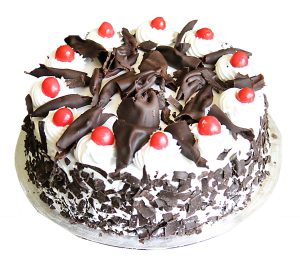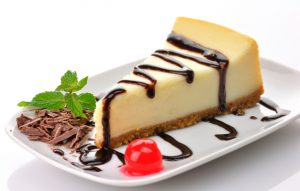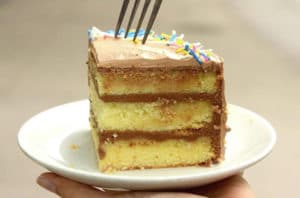If you make bread every weekend or have an obsession with cakes, it makes sense to keep specific flours for those recipes on-hand. You must notice that flour for cakes and biscuits has lower protein content than bread making flour and is milled from soft wheat varieties. The protein needed to form the structure of cakes and biscuits is not from the flour used but from other ingredients such as egg. Let talk about both cake and pastry one by one.
Cakes
Simply all of you are knows about cake right? But if we take a look at the definition of cake you can say “An item of soft sweet food made from a mixture of flour, fat, eggs, sugar, and other ingredients, baked and sometimes iced or decorated.” Or in other words, you can also say “An item of savoury food formed into a flat round shape, and typically baked or fried. Yes, You all are not interested in this boring definitions once the cake is in front of you. Are you interested in its taste right?
You can see the cake in different shapes. The most popular forms is always a round shape. You can also find various flavors of cake like chocolate, black forest, vanilla, and sometimes it can be the seasonal flavour or fruit taste like pinaple, mango, etc.. You can see the cakes are decorated with various themes or a different flavor of cream and many items like berries.

You might know that cake is a dessert made from sweet bread. The earlier cake is made from cheesecakes or fried bread, but nowadays you can see many varied forms of cakes. When you see the general recipe of cake, then it requires flour, sugar, eggs, oil or butter, milk or butter and leaving agent as we saw in the definition. Additional ingredients can ve according to the desired flavour. On the other hand, the batter of fruit cake is stiffer.
This all about cake and let’s take a look about pastry.
Pastry
“A dough of flour, fat, and water, used as a base and covering in baked dishes such as pies” this is what you can say about pastry. Fat in the dough refers to the fat that is solid at room temperature; for example, butter, lard or margarine. The pastry is a dough made from flour, shortening, and water. It’s used as a base or covering in dishes such as pies. It can also be the name for baked dough products like Danish pastries.
Pastry includes individual pastries that are often baked/ fried dough without externally added fillings like danish pastries and palmiers. Though, the common use of this word is for types of dough that are used as bases or for fillings- like puff pastry, short crust pastry, phyllo(pronounced -filo) pastry, and choux (pronounced- shoe) pastry. They are used for various desserts like pies, strudels, eclairs, profiteroles, baklava etc.

You can see numerous kinds of pastries. A crumbly shortcrust pastry can be prepared by adding 1 part of fat with 2.5 part of the floor. A puff pastry has several layers, and the fat is not thoroughly mixed in its mixture. A sweet pastry has the sugar apart from other basic ingredients.
So now you can understand that Cake and Pastry both are prepared from flour and are baked products. However, they differ in the type of flour that is used to prepare them. Cake flour contains less protein than pastry flour, as the protein promotes the creation of gluten.
Difference Between Pastry And Cake

If you are looking for a key difference then let me clear something up, Cake is generally made from a mixture of flour, sugar, eggs, and butter or oil. And Pastry usually a sweet dessert, essentially includes fat that is solid in room temperature. You can say cake flour is made from the soft-quality of wheat. This will give you a soft texture and relatively soft baked cakes. This flour is bleached and this process is what makes the flour soft, by breaking down the proteins in the flour. Pastry flour, though made from the same soft quality wheat will have a more defined texture than cake flour. It is usually made from red winter or soft white winter wheat.
cake and pastry both are different terms. the cake is a mass which is made from flour(structural component) , fat(shortening), sugar, and water (milk can also be used), mixed in different combinations into a batter which is chemically leavened(leavening agent is mixed with dry material), and baked in the oven.
Cake and pastry are both baked goods that are typically made with similar ingredients such as flour, sugar, eggs, and butter, but there are some key differences between the two.
- Texture: One of the most significant differences between cake and pastry is their texture. Cakes are typically soft and fluffy with a crumbly texture, while pastries are generally crisp and flaky.
- Ingredients: While cakes can contain a variety of ingredients such as fruits, nuts, and chocolate, pastries are typically made with a combination of flour, butter, and water. Some types of pastries may also include sugar or eggs.
- Preparation: Cakes are typically made by creaming together butter and sugar, adding in eggs and dry ingredients, and then baking in the oven. Pastries, on the other hand, are made by rolling out a dough, layering it with butter or another fat, and then folding and rolling the dough to create layers.
- Serving: Cakes are often served as a dessert, while pastries can be eaten as a snack or as part of a meal. Pastries can also be filled with a variety of sweet or savory ingredients, while cakes are usually not.
Some examples of cakes include sponge cake, pound cake, and cheesecake, while examples of pastries include croissants, puff pastries, and turnovers.
